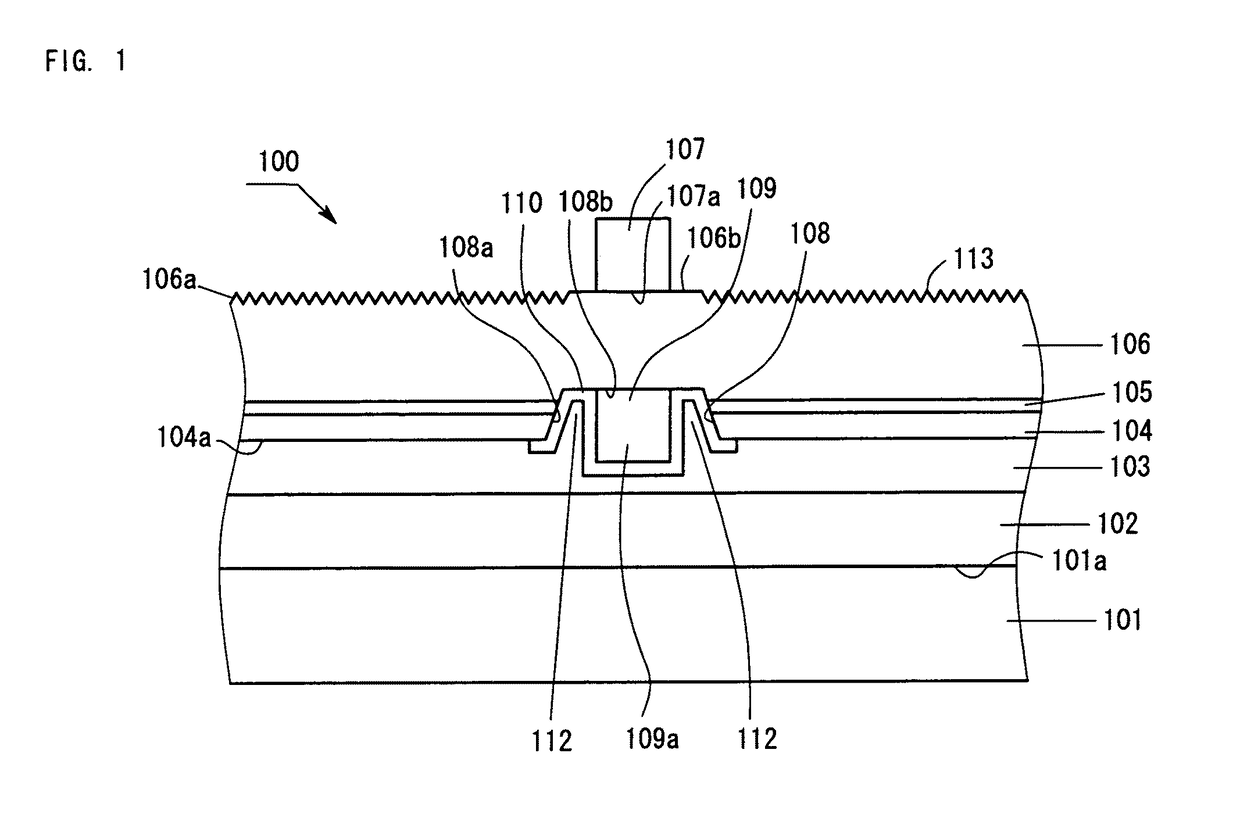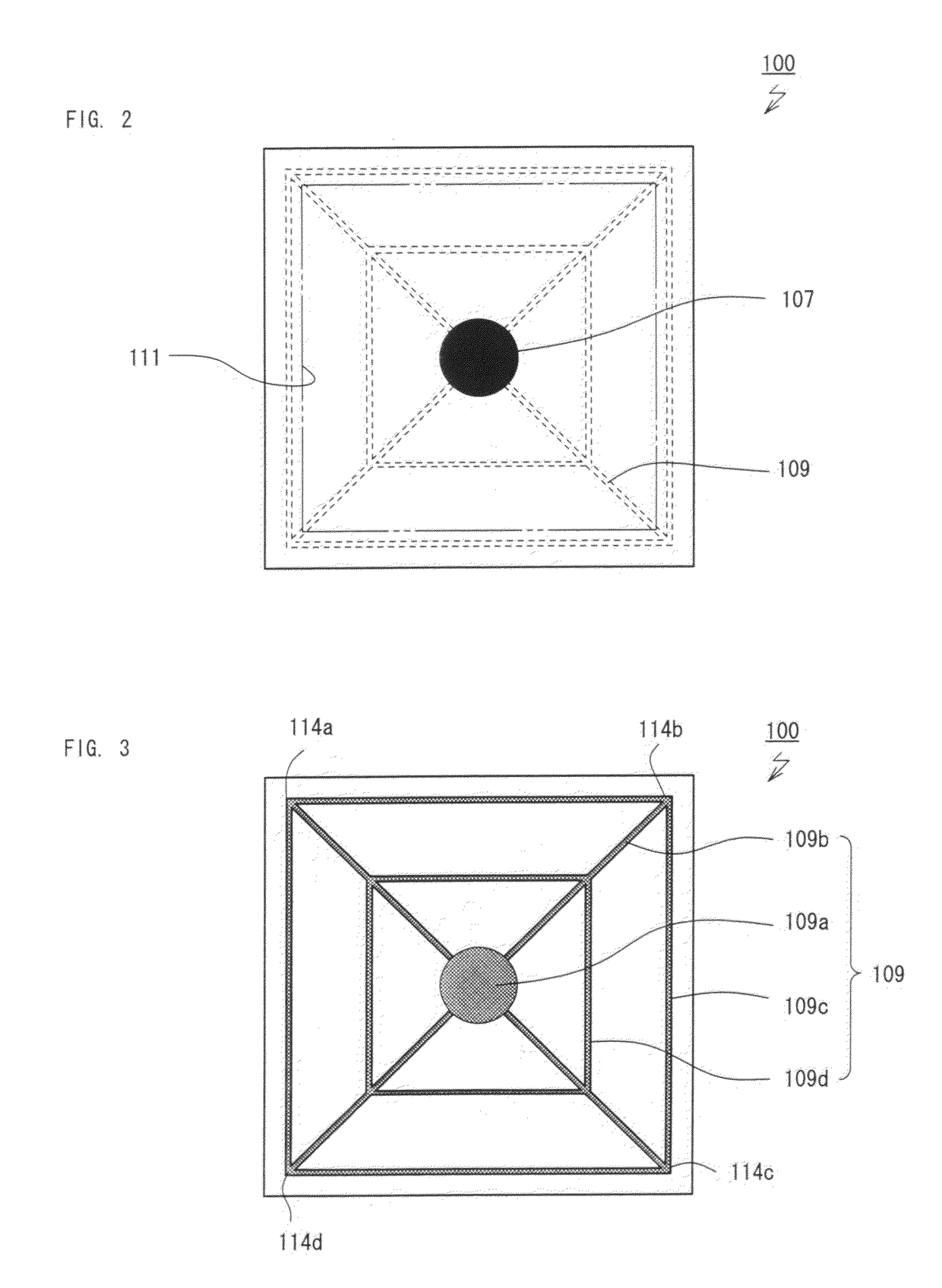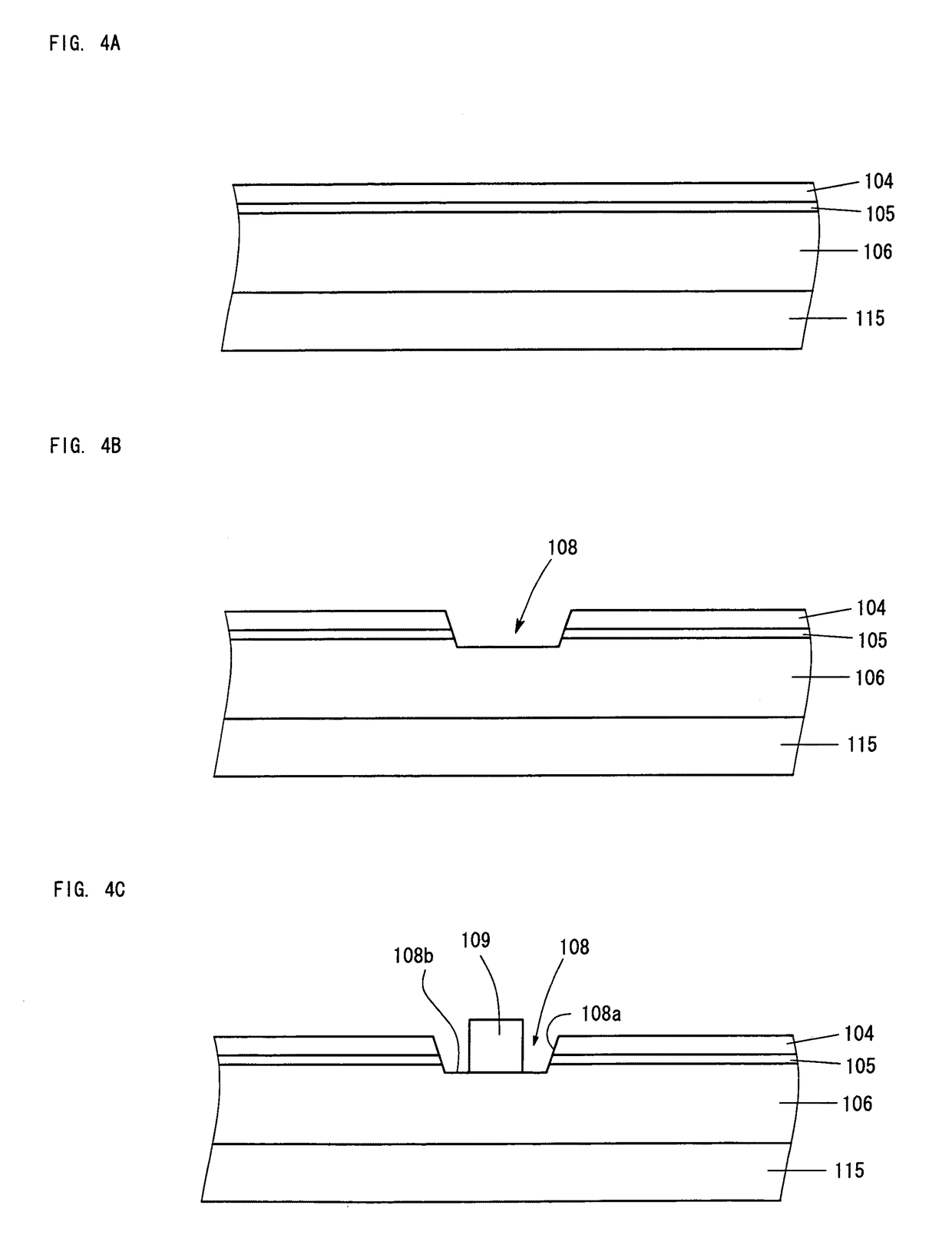Group III nitride semiconductor light-emitting device including an auxiliary electrode in contact with a back surface of an n-type layer
a technology of nitride and semiconductor light-emitting devices, which is applied in the direction of semiconductor devices, basic electric elements, electrical appliances, etc., can solve the problems of poor linearity in a high-current region of iii nitride semiconductor light-emitting devices, poor durability upon long-term operation, and poor electrical conductivity of sapphire, so as to improve light output and reduce the area of the n-electrode , the effect o
- Summary
- Abstract
- Description
- Claims
- Application Information
AI Technical Summary
Benefits of technology
Problems solved by technology
Method used
Image
Examples
embodiment 1
[0083]FIG. 1 is a cross-sectional view of the structure of a light-emitting device 100 according to Embodiment 1, and FIG. 2 is a top view of the light-emitting device 100. As shown in FIG. 2, the light-emitting device 100 has a square form as viewed from above. As shown in FIG. 1, the light-emitting device 100 includes a support 101; a low-melting-point metal layer 102 formed on the support 101; a p-electrode 103 bonded to the support 101 via the low-melting-point metal layer 102; a p-type layer 104, an active layer 105, and an n-type layer 106, which are formed of a Group III nitride semiconductor and sequentially stacked on the p-electrode 103; and an n-electrode 107 formed on the n-type layer 106.
[0084]The support 101 may be an electrically conductive substrate formed of, for example, Si, GaAs, Cu, or Cu—W. The low-melting-point metal layer 102 may be a eutectic metal layer such as an Au—Sn layer, an Au—Si layer, an Ag—Sn—Cu layer, or an Sn—Bi layer. Alternatively, the low-melti...
embodiment 2
[0115]In Embodiment 2, components having the same functions as those described in Embodiment 1 are denoted by the same reference numerals. FIG. 9 is a plan view of a light-emitting device 600 according to Embodiment 2, and FIG. 10 is a cross-sectional view of the device of FIG. 9, as taken along line A-A. As shown in FIG. 9, the light-emitting device 600 has a square form as viewed from above. As shown in FIG. 10, the light-emitting device 600 includes a support 101; a low-melting-point metal layer 102 formed on the support 101; a p-electrode 103 bonded to the support 101 via the low-melting-point metal layer 102; a p-type layer 104, an active layer 105, and an n-type layer 106, which are formed of a Group III nitride semiconductor and sequentially stacked on the p-electrode 103; an n-pad electrode 607; and an auxiliary electrode 609.
[0116]The support 101 may be an electrically conductive substrate formed of, for example, Si, GaAs, Cu, or Cu—W. A bottom electrode 117 is formed on th...
embodiment 3
[0139]In Embodiment 3, components having the same functions as those described in Embodiment 1 or 2 are denoted by the same reference numerals. FIG. 15 is a plan view of a light-emitting device 700 according to Embodiment 3, and FIG. 16 is a cross-sectional view of the device of FIG. 15, as taken along line A-A. As shown in FIG. 16, the light-emitting device 700 includes a ceramic substrate 701; a low-melting-point metal layer 102 formed on the ceramic substrate 701; a p-electrode 103 bonded to the ceramic substrate 701 via the low-melting-point metal layer 102; a p-type layer 104, an active layer 105, and an n-type layer 106, which are formed of a Group III nitride semiconductor and sequentially stacked on the p-electrode 103; an n-pad electrode 707; an auxiliary electrode 709; and a p-pad electrode 714. As shown in FIG. 15, the light-emitting device 700 has a square form as viewed from above, and the n-pad electrode 707 and the p-pad electrode 714 are formed on the same surface.
[0...
PUM
 Login to View More
Login to View More Abstract
Description
Claims
Application Information
 Login to View More
Login to View More - R&D
- Intellectual Property
- Life Sciences
- Materials
- Tech Scout
- Unparalleled Data Quality
- Higher Quality Content
- 60% Fewer Hallucinations
Browse by: Latest US Patents, China's latest patents, Technical Efficacy Thesaurus, Application Domain, Technology Topic, Popular Technical Reports.
© 2025 PatSnap. All rights reserved.Legal|Privacy policy|Modern Slavery Act Transparency Statement|Sitemap|About US| Contact US: help@patsnap.com



